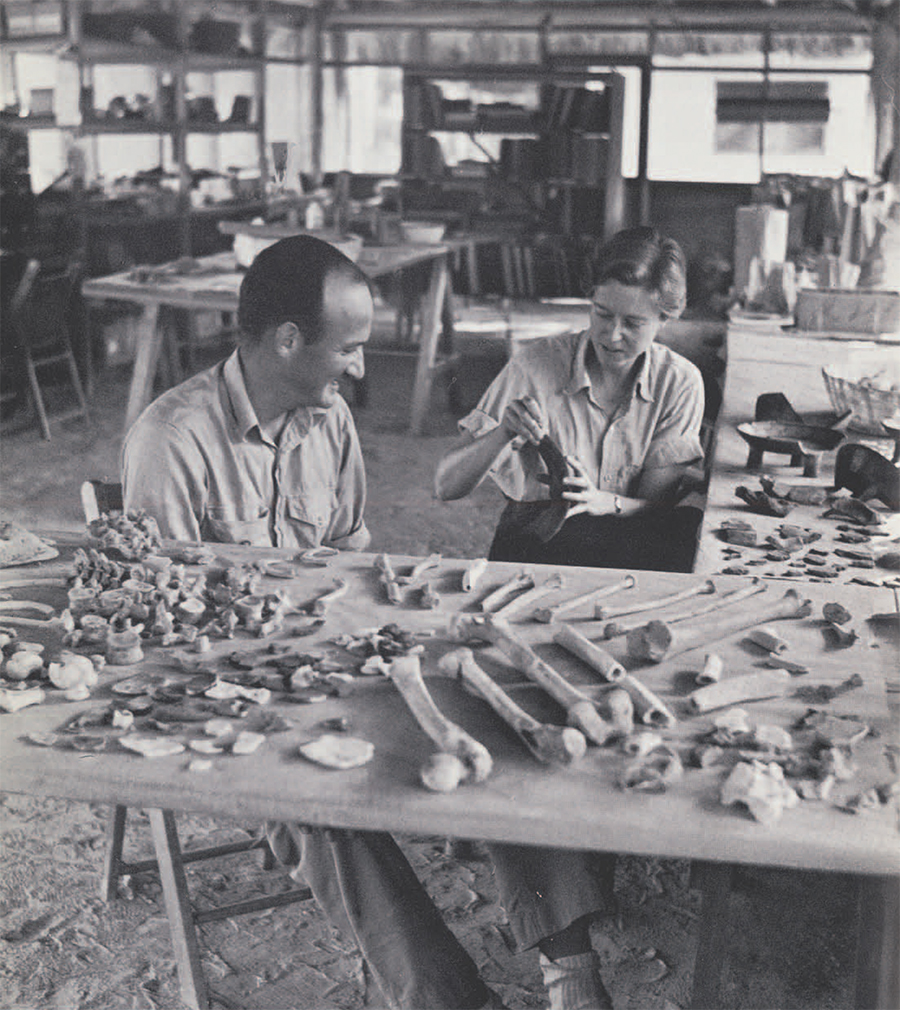
Archaeologists spend much time and a good deal of money digging. They spend months in the field recovering and recording preserved material culture, in order to piece together the history and ways of life and vanished people. Yet recovering the story from the information resulting from excavation entails a great deal of time and effort, sometimes more than was expended upon the excavation itself. In all but a few favored regions of the world, perhaps ninety percent of the material culture of the past has been lost. The archaeologist must try to glean all the information he can from the small residue of more durable objects available for study. These materials must be cleaned, repaired, classified, and fully recorded. Finally, the archaeologist is obligated to present his findings to interested persons–in the form of published excavation reports, general articles, museum exhibits, study collections, and so on. So, between the actual excavations and the published reports and museum collections is a center of activity devoted to processing and ordering materials, to gathering the facts which permit inferences about past history and customs. Preserved material culture can be readily divided into two classes: stationary remains, such as monuments, caches, tombs, buildings, and other constructions; and portable objects, such as pottery vessels and other man-made artifacts, and associated non-artifactual materials, such as human and animal bones, shells, and plant remains. The processing and ordering of the portable objects begins in the field and in the field laboratory. Nearly all archaeological excavations have some sort of field laboratory, usually staffed by the excavators themselves in their off-hours, but often including one or more full-time workers who normally do not dig. Such a field lab has been established at the Maya site of Tikal in Guatemala, where the University Museum has had an expedition since 1956. The Tikal Project camp has expanded little by little over the years, and so has the field lab. From a modest beginning in 1957 in a corner of the Project garage and tool shop, the laboratory moved the following year to the thatch-roofed building formerly used as a dormitory for the male members of the Project staff. Almost immediately, space for storage and study became a problem, and so a larger building was constructed for these purposes. This building, known as the bodega, also has a galvanized metal roof for collecting rain for drinking water. Cleaning, sorting, repairing, and cataloguing of materials are done in the lab. No restoration of objects is done at Tikal itself at present. Processed materials are stored, studied, and photographed in the bodega. Films are sent to Philadelphia for developing, printing and cataloguing.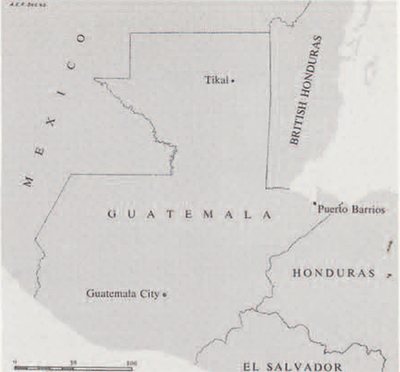 All objects excavated at Tikal belong to the Republic of Guatemala and remain in the country. At present most are stored in the Tikal bodega and a few are on exhibit in the National Museum in Guatemala City. However, a site museum is under construction at Tikal itself and during the spring of 1963 the finer objects will be transferred to a place where visitors may easily see them. A tomb burial found in 1961 will serve as an example of the workings of the field laboratory. This burial, Burial 48, noteworthy for the hieroglyphs painted on the plastered tomb walls, has been described in a previous issue of Expedition by Shook and Kidder (“The Painted Tomb at Tikal,” Vol. 4, No. 1, Fall, 1961). As soon as the tomb was opened and before anything inside was touched, it was thoroughly photographed. during the painstaking process of excavation, Kidder and Shook drew a scaled plan of the tomb showing the position of the bodies and offerings within it. Field numbers were given to objects on the plan and corresponding numbers placed on the objects themselves. These field numbers also appear on the object catalogue cards and permit an exact reconstruction of the layout of the burial. After being drawn on the plan and given field numbers, the objects were removed from the tomb and taken to the lab. Some of the more delicate materials of stucco or of organic origin were strengthened in situ with a thin solution of alvar in acetone. After the tomb was completely cleared, the painted glyphs were again photographed and drawn to scale. Fragments of glyphs which had scaled off the walls were collected, brought into the lab, and treated with the alvar solution. These fragments permitted the completion of some of the partial glyphs remaining on the tomb walls, and the piecing together of a couple new ones.
All objects excavated at Tikal belong to the Republic of Guatemala and remain in the country. At present most are stored in the Tikal bodega and a few are on exhibit in the National Museum in Guatemala City. However, a site museum is under construction at Tikal itself and during the spring of 1963 the finer objects will be transferred to a place where visitors may easily see them. A tomb burial found in 1961 will serve as an example of the workings of the field laboratory. This burial, Burial 48, noteworthy for the hieroglyphs painted on the plastered tomb walls, has been described in a previous issue of Expedition by Shook and Kidder (“The Painted Tomb at Tikal,” Vol. 4, No. 1, Fall, 1961). As soon as the tomb was opened and before anything inside was touched, it was thoroughly photographed. during the painstaking process of excavation, Kidder and Shook drew a scaled plan of the tomb showing the position of the bodies and offerings within it. Field numbers were given to objects on the plan and corresponding numbers placed on the objects themselves. These field numbers also appear on the object catalogue cards and permit an exact reconstruction of the layout of the burial. After being drawn on the plan and given field numbers, the objects were removed from the tomb and taken to the lab. Some of the more delicate materials of stucco or of organic origin were strengthened in situ with a thin solution of alvar in acetone. After the tomb was completely cleared, the painted glyphs were again photographed and drawn to scale. Fragments of glyphs which had scaled off the walls were collected, brought into the lab, and treated with the alvar solution. These fragments permitted the completion of some of the partial glyphs remaining on the tomb walls, and the piecing together of a couple new ones.
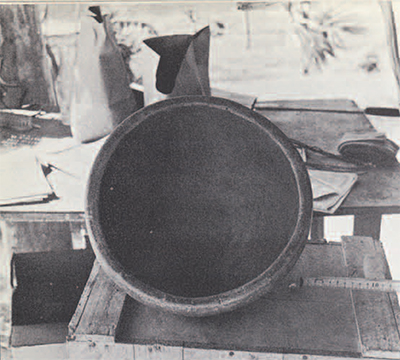
After the tomb contents had arrived in the laboratory, they were sorted into washable and “dry-clean” categories. Into the former went the stone objects, the shells, and most of the pottery vessels. After washing, the pottery vessels were glued. The other objects either needed no repair, or–like an eroded alabaster bowl–could not be repaired. The most difficult object to clean and repair was a cylindrical tripod pottery vessel and its cover. After firing, both jar and cover had been given a thin coat of stucco carefully painted with very interesting motifs. The design on the cover, in rose, light green, orange, and white, with black details, has three panels of shell-like elements separated by vertical panels of feather-like motifs. The jar shows three skulls, each with blood gushing from the mouth and bordered by feathers. Between each two skulls is a six-pointed, star-like element with a red center. The skulls and stars are white, the feather borders are light green and light red, the background is pale pink. The stucco-covered feet of the jar are light green with light red borders. While the painted design shows affinities with the central Mexican site of Teotihuacan, the hollow, modeled, unstuccoed human head which forms the handle of the cover is of Maya style. the stucco on the cover and on the lower portion of the jar was firm and well preserved. The stucco on the shattered upper portion of the jar, however, had to be carefully removed, brushed clean with a fine paintbrush, and stiffened with thin alvar solution. The upper part of the jar was glued together–after each sherd had been brushed with a dry brush–and then the stucco was replaced.
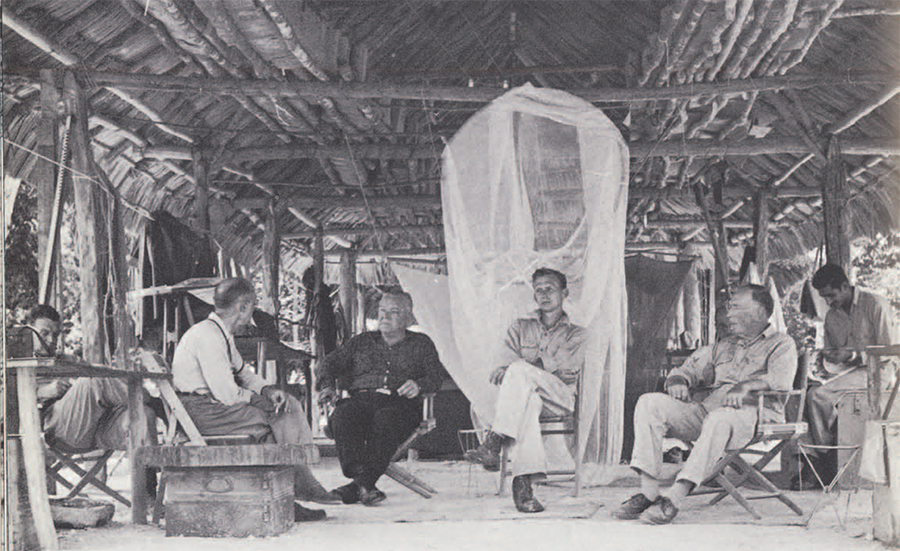
We discovered that the particular type of black mortuary pottery found with Burial 48 was so poorly fired that it would dissolve in water, or warp and crack upon drying. The important vessels, therefore, were brushed clean, and then rubbed with mineral oil which made the lime deposit on them somewhat transparent. All bone material, human and animal, found in the tomb was also brushed clean. Farily complete bones were dipped in alvar solution for strengthening. A great deal of other, unidentified organic material, some of it associated with thin layers of polished, painted stucco, was also recovered. Some of this was treated with alvar to preserve it; some was left untreated for possible chemical analysis in the future. After cleaning and repairing, all of the objects recovered from Burial 48, including the human remains, were catalogued on object catalogue cards. The Tikal object file is so arranged that all artifacts of a particular type and material (e.g., stone beads) are filed together, while another card, the lot card, lists all of the artifacts and substances from a specific location (e.g., the tomb of Burial 48).
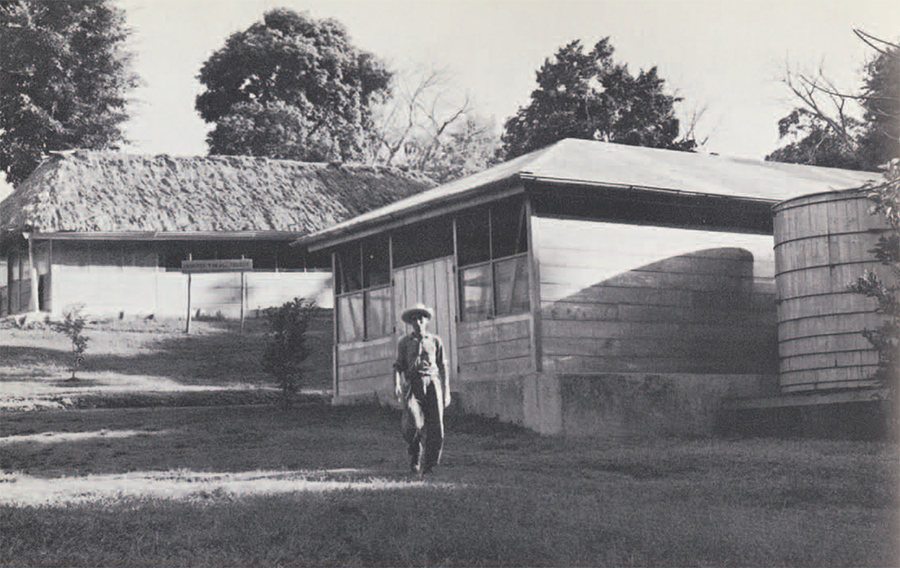
The artifacts were then taken to the bodega for black and white record shots. A few of the more showy pottery vessels were photographed in color. The negatives were numbered and catalogued in a negative catalogue file in Philadelphia, and the negative numbers were later added to the object catalogue cards. The mass of organic material, however, still awaits some amiable expert. The human remains are currently being studied as part of a separate Tikal Report which will deal with the physical anthropology of ancient Tikal.
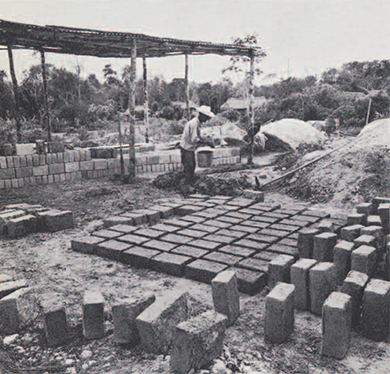
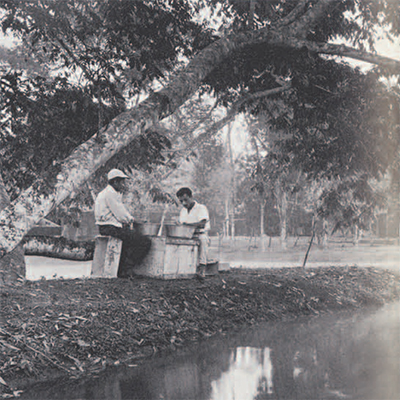
As a rule, a scaled drawing is made of each whole or nearly whole pottery vessel found at Tikal. The drawing always shows a section or cut-away view and thus supplements the record photograph. color notation according to the Munsell Color System are taken at this time, and the color notation and the fact that a drawing has been made are included on the catalogue card. Section drawings were also made of some of the more unusual stone artifacts from Burial 48, and a 1:1 preliminary drawing was made of the layout of the skull and star design on the stuccoed pottery vessel described above.
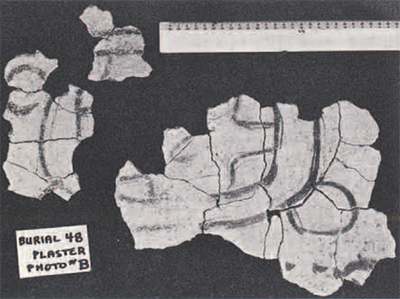
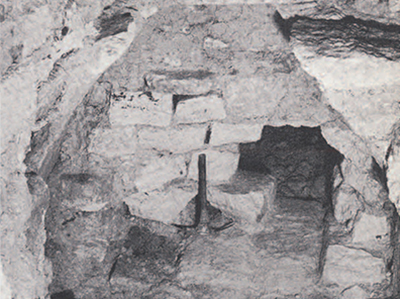

The completely processed Burial 48 objects were stored in the bodega. These materials, together with the photographs and drawings made in the field when the tomb was discovered and excavated, the data included on the catalogue cards, the record photographs of the artifacts, and the section of the pottery vessels and some of the stone artifacts will form the bases for a complete report on Burial 48 which will be published in a future Tikal Report.
Burial 48 was important and complicated enough to bring al the aspects of the field lab to bear on it. It represented a fairly self-contained project about which the work could easily be organized. Yet all portable artifactual and non-artifactual materials unearthed at Tikal are handled in approximately the same manner. They all pass through the field laboratory, which can be considered as an essential step in the fascinating process of imposing order upon the raw data derived from excavation; a process which hopefully culminates in the knowledge of the history and way of life of a vanished people.
